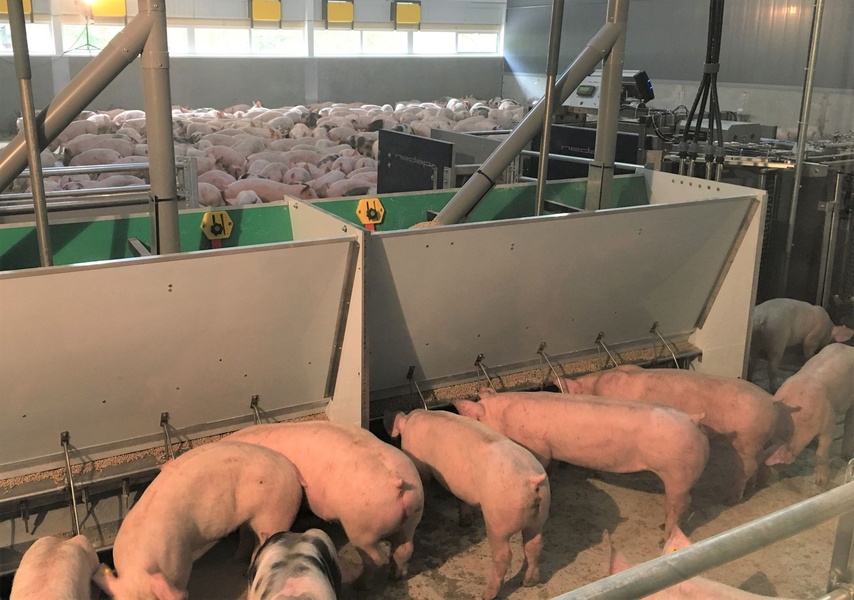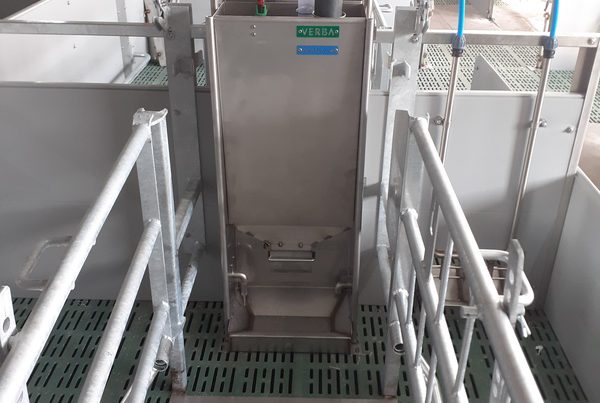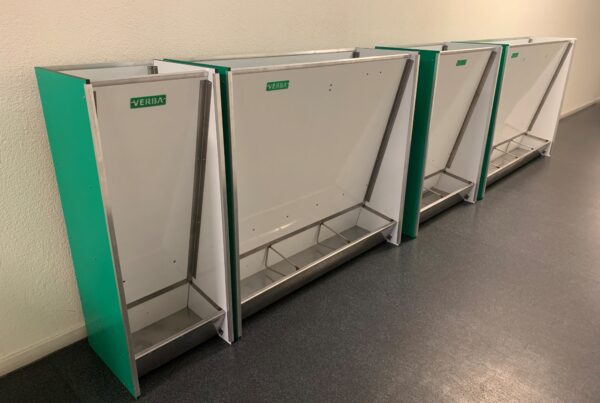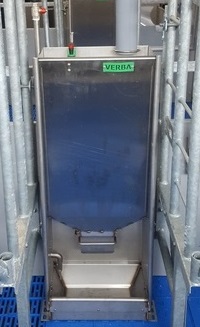Scientific research shows that troughs where drinking and eating are clearly separated, instead of a so-called liquid feeder, give a clearly more favorable feed conversion. In addition, good and accurate adjustment as well as the presence of anti spillage edges in the trough are very important. Almost all our troughs for piglets and fattening pigs have anti spillage edges. Unfortunately, in practice we still see many troughs that have no anti-spill rim at all, while this is very important. Please pay close attention when purchasing a trough if the trough has a spill ring at all and how the anti spill ring is constructed.
Excellent article in pig trade journal on importance of feeders
In November 2023, John Lamers of Varkens magazine wrote an excellent article following a meeting day at the Pig Academy where researcher Sander Palmans of the Belgian Trial and Training Center for Agriculture gave his talk. You can read this article here, we encourage you to take a closer look at this article on pig feed. The research shows that investing in a new but certainly also good feeder can save an enormous amount of money and that within 1 year you will easily earn back a good feeder.
Small amount of feed loss per day quickly costs pig farmer a lot of money
Source: John Lamers Trade magazine Pigs
50 grams of feed spillage per pig per day occurs regularly on pig farms. And it can certainly be even more, researcher Sander Palmans knows from measurements. It doesn't seem like much, but it just means a bulk truck full of feed in the pit every year.
Researcher Palmans of the Research and Training Center for Agriculture gave tips for reducing feed and water spillage during the PigAcademy hit day in Rumbeke, Belgium, on Nov. 24.
Back again to the 50 grams of feed spillage per day. That's 17 pounds per porker per year at 340 days of stocking. With two thousand places, that's 34,000 kilos of feed in the pit. Palmans: "That then costs you money twice: for the purchase of the feed and for the extra manure removal.
Tackling feed spillage is not that difficult, in Palmans' view, by paying close attention during the daily round through the stable. 'A feed trough may contain a little bit of feed, but no more than that. If there is a layer of feed at the bottom of the trough, it is certain that there will be considerable spillage.
Rather fresh food
A closed plate around the feed trough makes no sense as far as feed spillage is concerned. 'Pig farmers often assume that the feed that falls on this will still be eaten,' says Palmans. 'That's not correct. Some manure or urine always gets to this feed and then the pigs leave it. In fact, they can also choose to eat the fresh feed in the trough. What would you do yourself?
To prevent spillage, proper feeder adjustment is important. To this end, a study compared gap widths at the bottom of the feeder of 9, 14 and 24 millimeters. With pellet feed of 3 millimeters in the feeder.
The 9-millimeter gap seems too small. The pigs then have to make too much effort to reach the feed. 'They then no longer meet the last bit of their needs and start inhibiting themselves,' Palmans explains. 'In the trial, this reduced growth from 852 to 807 grams per day. The feed conversion did improve from 2.38 to 2.44, but that is not significant.'
Higher feed conversion rate
With the wide groove, growth was slightly lower, at 839 grams versus 852 grams, while the pigs did consume 30 grams more feed over the entire period. As a result, feed conversion was 2.46 with the wide groove at the bottom of the feed trough, compared to 2.38 with the normal groove width. At 250 euros per ton of feed, this costs the pig farmer 1.80 euros per pig delivered.
In weaned piglets, the same study was conducted with groove widths of 14, 19 and 33 millimeters. Between the 14 and 19 millimeter groove widths, there was no difference in growth and feed conversion. With the wide groove, there was. Here, feed conversion increased from 1.46 to 1.55. This 9-point difference costs 49 cents per piglet at 350 euros per ton of feed.
Feed trough properly adjusted
So feed spillage can certainly be reduced by a properly adjusted feeder. Palmans advises against adjusting the feed trough generously for the first few days to 'teach' piglets how to eat. 'The piglets have plenty of time to eat and a lot of feed in the trough single leads to more spillage and poorer feed conversion.'
Giving extra feed or feed with water to the newly laid piglets surprisingly had no positive effect on growth and feed conversion. 'For feel we do that and maybe it's good, single in the research we can't prove the benefit,' the researcher points out. 'You do, of course, have to make sure there are enough feeding areas. In the study, we used a combi trough with three eating areas for 10 piglets.'
Excessive water release
There should be no layer of water in mash or combi bins. This causes not single water but also feed spillage. The cause of water spillage may be due to too high a flow rate of the nipple and too high a water pressure. Field studies showed water releases of 0.4 to 9 liters per minute, with many farms showing releases of 3 to 4 liters per minute.
A porker can drink 1 to 2 liters per minute, a piglet single 250 milliliters. A higher water release from the nipple creates risk of wastage. The pilot farm therefore uses a release of between 0.5 and 1 liter for the fattening pigs.
There may also be too much pressure on the pipe. If this causes water to spray into the mouth, it can lead to wastage or pigs not drinking properly.
Water quality could be better
Another concern with drinking water is water quality. In one survey, 24 of 27 swine farms thought the water quality was good. There was no or little precipitation in the water at single 12 of those 27 farms, and at the end of the pipeline single 5 of the 27.
Water quality surveys showed that coliforms in particular were frequent. At the source, 13 farms were above the target value. This was also the case at the end of the pipeline. In addition, there were 5 farms that were too high for fecal E. Coli and 8 for enterococci.





